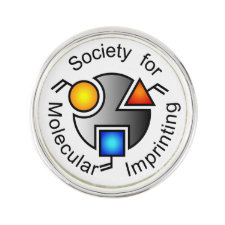
Authors: Hsu CY, Lin HY, Chou TC, Thomas JL
Article Title: Synthesis of and recognition by ribonuclease A imprinted polymers.
Publication date: 2006
Journal: Nanotechnology
Volume: 17
Issue: (4)
Page numbers: S77-S83.
DOI: 10.1088/0957-4484/17/4/012
Abstract: Ribonuclease (RNase), an enzyme which degrades RNA, is ubiquitous in living organisms, can renature after autoclaving, and is difficult to inactivate. The removal of RNase is especially necessary for the reverse transcription- polymerase chain reaction (RT-PCR) and for in vitro transcription and translation. Typically, RNase inhibitors must be added to these reactions nowadays. Molecularly imprinted polymers (MIPs) could offer many advantages for removal of undesired enzymes, including high binding selectivity, stability, low cost, and facile synthesis. Surface imprinting, employing immobilized RNase, was used in this study to make the most effective use of the template molecules - clearly, inaccessible binding sites, no matter how well imprinted, are not useful for target binding. Different monomers and cross-linkers were used to synthesize RNase-templated MIPs, and the rebinding capacity of each composition was characterized. We found that using polyethylene glycol 400 dimethacrylate (PEG400DMA) gave the highest imprinting effectiveness (i.e. the highest RNase binding ratio between imprinted and non-imprinted polymers). However, including styrene monomer (50 wt%) gave polymers with the highest overall affinity for ribonuclease A (RNase A). Finally, isothermal titration calorimetry was used as an auxiliary tool to help elucidate the mechanisms of the binding of monomers to templates, and ligands to MIPs. ® 2006 IOP Publishing Ltd
Template and target information: protein, Ribonuclease A, RNase



Join the Society for Molecular Imprinting

New items RSS feed
Sign-up for e-mail updates:
Choose between receiving an occasional newsletter or more frequent e-mail alerts.
Click here to go to the sign-up page.
Is your name elemental or peptidic? Enter your name and find out by clicking either of the buttons below!
Other products you may like:
 MIPdatabase
MIPdatabase









